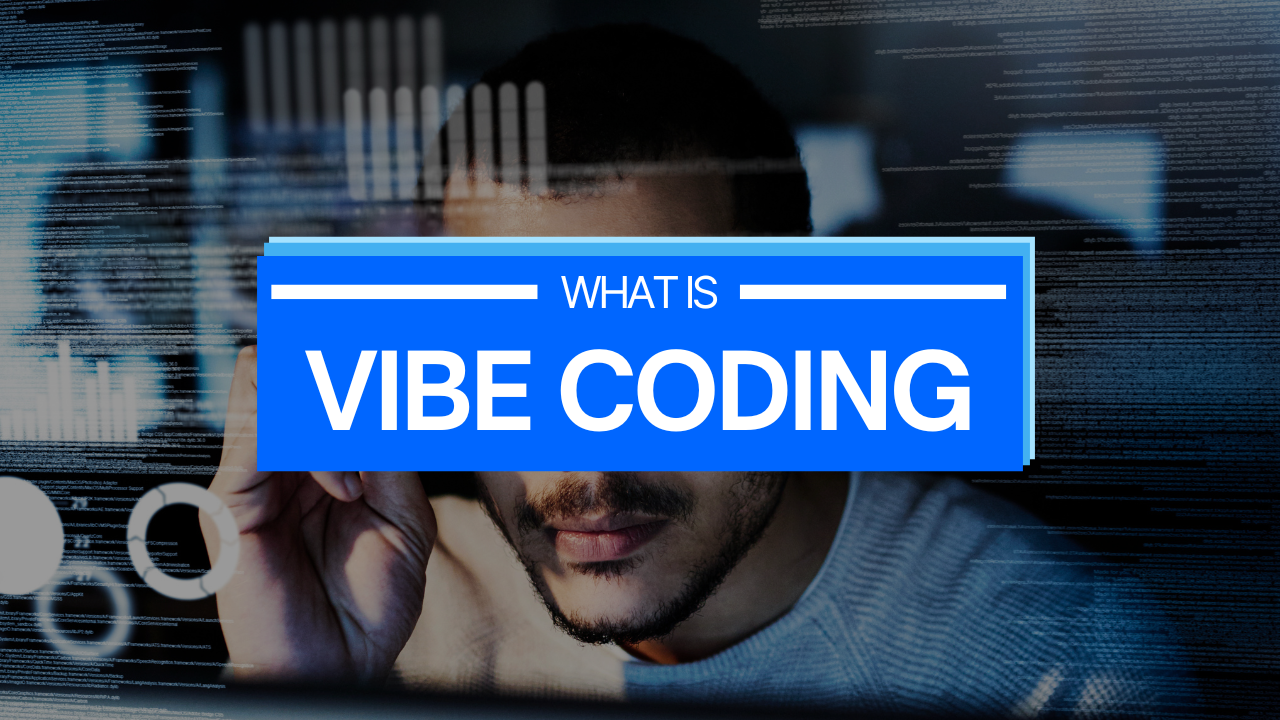Vibe coding is changing the game for software development. First mentioned by AI expert Andrej Karpathy, it's a new approach where programmers let AI do most of the hard work while they just guide it with simple instructions. Instead of writing every line of code by hand, developers can now describe what they want in plain English, and the AI figures out how to make it happen. It's like having a super-fast coding partner who never gets tired.
I've been watching this trend grow, and it's fascinating how it's making programming more accessible and faster than ever before. Let's dive into what vibe coding really is, where it came from, and what it means for the future of software development.
What is vibe coding?
Vibe coding is when developers tell AI what they want in plain English instead of writing code themselves. As Karpathy explained, developers "give in to the vibes" and "forget that the code even exists." You simply talk to the AI about what you need, check what it makes, and suggest changes through normal conversation.
Karpathy summed it up: "I just see stuff, say stuff, run stuff, and copy-paste stuff, and it mostly works." The AI acts like your coding helper that handles all the technical details while you focus on your ideas.
Historical background: The evolution of vibe coding
Vibe coding didn't happen overnight. For decades, programmers have tried to make coding simpler. We moved from punch cards to typing commands to more user-friendly languages like Python. The journey to vibe coding started in the 2010s with basic help like autocomplete. In 2021, GitHub Copilot began suggesting code as you typed. By late 2022, ChatGPT changed everything, letting people create code just by explaining what they wanted. In 2023, almost half of developers were using AI coding tools. In 2024, special editor tools like Cursor appeared, even letting people speak their code into existence. Finally, in 2025, Karpathy's post named this approach "vibe coding," and companies started building entire apps through AI conversations.
Core methodologies and techniques
Vibe coding works very differently from regular coding. You start by telling the AI what you want, like "Create a login form with dark mode." The AI writes all the code for you. You can make changes by saying things like "Make the buttons rounded." If there's an error, just show it to the AI and it will fix it. When you're happy with the result, you're done!
Many tools now support voice commands too. Karpathy mentioned he "barely even touches the keyboard" when vibe coding. It feels more like having a conversation about your project than writing actual code.
Key tools & frameworks enabling vibe coding
Several important technologies make vibe coding possible. Large Language Models from companies like OpenAI, Google, Meta, and Anthropic understand human language and write code in many programming languages. GitHub Copilot helps by suggesting code as you type. ChatGPT and similar AI chatbots have become popular coding assistants. Replit now lets you build apps by chatting with AI, even from your phone. New editors like Cursor let you talk directly with your code. Some experimental tools like Vibe Coder even let you code hands-free using just your voice.
Advantages of vibe coding
Vibe coding has some big benefits. First, it's much faster - what used to take days now takes hours. Second, almost anyone can create software by just describing what they want, even without coding experience. Third, developers can focus on creative ideas instead of fixing syntax errors. Fourth, it's perfect for quickly testing ideas - some startup founders say they're "only a few prompts away from a product." Finally, people who find traditional coding difficult can now build software using simple commands or even their voice.
Limitations of the vibe coding approach
Vibe coding isn't perfect. People who rely on AI might not learn important programming basics. Harry Law warns that beginners "might not learn about system architecture or performance." The code quality can be problematic too - even Karpathy admitted his AI-written code "grows beyond my usual comprehension," making it hard to maintain. Complex projects are especially challenging. As one investor said, you can build the first 75% easily, but when you try to make changes, things often fall apart. Fixing bugs can also be difficult, especially subtle problems that need a deep understanding of the whole system.
Critiques and concerns about AI-generated code
Many developers have mixed feelings about depending on AI. Some think vibe coding is overhyped - one Microsoft engineer said AI models still "generate a lot of nonsense content" for anything beyond simple tasks. Others worry that developers won't learn essential skills if they just tell AI what to build. There's also confusion about who's responsible when AI-written code causes problems - is it the AI's fault or the person who used the code? Security experts worry about code that nobody fully reviewed. And jobs will definitely change - Sam Altman predicted software engineering would be "very different by the end of 2025." Most believe AI will help engineers rather than replace them, but the skills needed will change.
Real-world applications and adoption
Vibe coding is already being used in many ways. Hobbyists build weekend projects with it - one person made a restaurant menu translator app in just one evening. Startups like Menlo Park Lab use it to build features, with founder Misbah Syed developing products by simply telling AI what he wants. Big companies are bringing vibe coding to their teams through platforms like Gitpod. Even experienced web developers use it to speed up tasks like creating forms or designing interfaces. Data analysts who aren't professional coders use simple language to get AI to write data processing scripts. Schools are now teaching students how to work effectively with AI coding assistants.
Current status and future of vibe coding
In 2025, vibe coding is becoming popular but isn't everywhere yet. By 2023, almost half of professional developers were using AI coding tools, with more planning to start. But traditional coding is still used for critical systems in fields like aerospace and finance.
Looking ahead, the role of software engineers will likely change from writing code to guiding AI and checking its work. We'll probably see new ways to code, like voice commands and maybe even VR interfaces. AI will likely help with all parts of making software, from writing code to testing and maintenance. The job market will shift - there may be less need for junior developers doing simple tasks, but more demand for people who work well with AI. New tools will emerge to make sure AI-generated code is secure and reliable. And we'll likely see AI models designed specifically for different types of coding tasks.
Conclusion
Vibe coding is an exciting new way to develop software where AI handles the coding details while humans focus on the big ideas. This makes programming faster and more accessible to everyone. While there are valid concerns about code quality and whether developers will learn fundamental skills, the benefits are hard to ignore. As one enthusiast said, "We're witnessing the early days of a transformation" in how we create software. The key will be finding the right balance - using AI as a helpful tool while maintaining human oversight and understanding. As vibe coding improves alongside AI technology, it will likely become a central part of software development.



